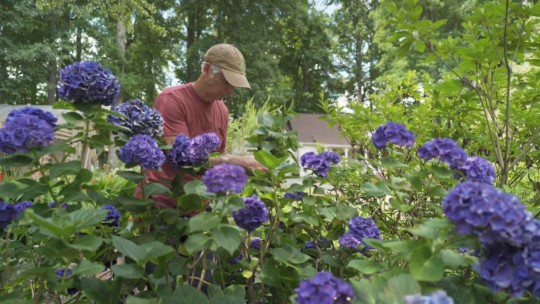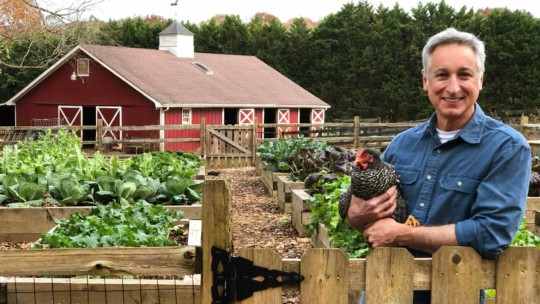Even if you plant backyard beds using healthy garden soil, your plants still need nutrient replenishment from time to time as they grow. In this video, Joe Lamp’l—a.k.a. Joe Gardener—outlines the steps needed to maintain healthy soil, and ensure it’s productive, season after season.
Lamp’l’s Soil Suggestions
- Feed your soil. Chances are, you created the most productive growing environment possible when first planting your garden beds. But, you can’t stop there. Lamp’l explains the importance of continuing to make deposits and contributions of more organic matter and compost to keep your beds productive.
- Make deposits in your soil account. Lamp’l urges homeowners to think of planting bed soil much like they would a bank account. The more deposits you make to the account, the healthier your account will be. Of course, if all you do is make withdrawals, that’ll eventually catch up with you and your account will have no value. Bottom line, he says: the currency of your garden soil lays in its organic matter. This is mainly compost, but rotted leaves, well-aged poultry manure, composted bark or mulch will work well, too. Those organic ingredients have nitrogen and carbon and other important nutrients that replenish and fortify soil that’s had its nutrients withdrawn by the plants that require them to be productive.
- Top dress beds in spring and fall. Lamp’l top dresses his beds twice each year—once in early spring and again in early fall just before he plants his cool-season garden. He does so with about an inch of homemade and purchased compost, but also uses other compost ingredients such as shredded leaves, aged mulch and grass clippings. He adds new amendments to the top of his beds while they’re empty so it’s easier to distribute and work the compost lightly into the surface.
- Tend lightly. Healthy soil is comprised of lots of networks and systems below ground that are best left undisturbed. That’s why, when Lamp’l is amending his beds, he doesn’t work toppings deeply into the soil. It’s not necessary, he says. The microorganisms and other soil-dwelling creatures—especially earthworms—will draw all the amendments down into the soil. In this way, there’s no need to disrupt the existing soil network and structure.
- Plant your plants. Once the amendments are added and dispersed, Lamp’l sews his seeds or adds his plants. He also adds about two inches of mulch over the soil and around the plants. Mulch offers a lot of benefits. But, as it relates to the soil amendments, it mainly adds a layer of protection from exposure. The added bonus is that the natural mulch itself becomes its own soil amendment as it breaks down. So, you can be confident that it’s constantly feeding your soil.



